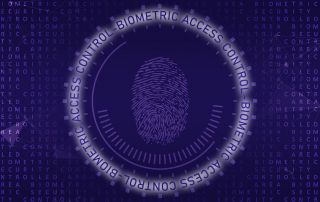UEFI Malware: Functionality and Protection Measures
Unified Extensible Firmware Interface (UEFI) is the modern successor to the Basic Input/Output System (BIOS), which has been used since the early days of computer technology. UEFI serves as the interface between a computer’s firmware and its operating system and offers numerous advantages over BIOS, including faster boot times, improved security features, and support for larger hard drives.
However, the introduction of UEFI has also brought new security challenges. One of the most dangerous threats in this area is UEFI malware, a particularly insidious form of malicious software that operates at a very low system level, is difficult to detect, and can cause significant damage.

How UEFI malware works
1. Points of attack and routes of infection
UEFI malware aims to infect a computer’s firmware, which becomes active even before the operating system starts. This makes it difficult or impossible for traditional, operating system-based security measures to detect this type of malware. There are several ways UEFI malware can infiltrate a system:
- Physical Access: An attacker with physical access to a device can directly manipulate the firmware using specialized tools or compromised hardware. This is a particular risk in environments with shared or publicly accessible computers.
- Firmware Vulnerabilities: Vulnerabilities in the UEFI firmware itself can be exploited to inject malicious code. These vulnerabilities can arise from poorly implemented security practices or from the complexity of the UEFI code.
- Firmware Updates: Firmware updates provided by manufacturers can also be an entry point. If these updates have not been properly verified or come from untrusted sources, manipulated firmware can be introduced.
- Remote Attacks: UEFI malware can also enter a system via network interfaces or infected peripherals. Attackers can exploit vulnerabilities in network protocols or USB devices to spread malicious code.
2. Persistence and camouflage
UEFI malware is designed to be extremely persistent and difficult to remove. Once installed, it overwrites critical areas of the firmware and can execute every time the system boots, even before the operating system loads. This allows the malware to persist even after a clean installation of the operating system or a hard drive replacement.
Stealth is another key characteristic of UEFI malware. It can modify legitimate firmware components or hide in areas not covered by conventional scans. This allows it to remain undetected for extended periods and continuously perform malicious activities, such as data theft, installing additional malware, or manipulating the operating system.
Protection measures against UEFI malware
1. Firmware updates and security vulnerabilities
Regular Updates: It is crucial that a system’s firmware is updated regularly. Manufacturers frequently release updates that close known security gaps and improve the overall security of the system. These updates should be installed promptly to minimize the risk of infection.
Verified Sources: Firmware updates should only be downloaded from trusted and official manufacturer sources. Third-party updates or those from untrusted sources could be compromised and contain malware.
2. Activate security features
- Secure Boot: Secure Boot is a UEFI feature that ensures only trusted software with valid signatures is executed during the boot process. Enabling Secure Boot prevents unauthorized software or malware from loading when the system starts.
- TPM (Trusted Platform Module): The Trusted Platform Module (TPM) is a hardware module that provides additional layers of security by storing and using cryptographic keys. TPM can help verify the integrity of the system and ensure that no unauthorized firmware is loaded. Enabling and properly configuring TPM is an important step in securing the system.
3. Security awareness and best practices
Protect Physical Access: It is important to prevent unauthorized physical access to devices, especially in public or shared environments. This can be achieved through physical security measures such as lockable enclosures, access controls, and monitoring.
Network Security: Use firewalls and network monitoring tools to detect and block suspicious activity. A well-configured network can help identify and stop attacks early.
Training and Awareness: Users should receive regular training and education on the dangers of UEFI malware and general security practices. This includes recognizing suspicious activity, handling firmware updates safely, and understanding the importance of security features.
4. Specialized security software
- Firmware Scanner: There is specialized security software specifically designed to scan UEFI firmware. These tools can detect anomalies and malicious changes in the firmware that are missed by conventional antivirus programs.
- Endpoint Protection: Integrated endpoint security solutions that offer multiple layers of protection can help monitor and block suspicious low-level activity. These solutions often combine various technologies such as behavioral analysis, heuristics, and machine learning to detect and prevent threats.
Conclusion
UEFI malware poses a serious threat to modern computer systems. Its ability to deeply penetrate firmware and bypass traditional security mechanisms allows it to cause significant damage and makes it extremely difficult to remove. However, many of these threats can be successfully mitigated through a combination of regular updates, enabled security features, and best practices.
Awareness of these risks and continuous vigilance are the first and crucial step in ensuring system security and integrity. Protection against UEFI malware requires a comprehensive security strategy that includes technical measures as well as training and awareness programs.
Beliebte Beiträge
The heart of AI regulation: What is the EU’s new “AI office”?
The new EU AI Office (European AI Office) is the central authority for enforcing and monitoring the AI Act. It regulates high-risk AI and general-purpose AI models (GPAI), coordinates EU member states, and promotes trustworthy AI innovation in Europe.
More than just a password: Why 2-factor authentication is mandatory today
Why is two-factor authentication (2FA) mandatory today? Because passwords are constantly being stolen through data leaks and phishing. 2FA is the second, crucial barrier (e.g., via an app) that stops attackers – even if they know your password. Protect yourself now!
Beware of phishing: Your PayPal account has been restricted.
Beware of the email "Your PayPal account has been restricted." Criminals are using this phishing scam to steal your login information and money. They pressure you into clicking on fake links. We'll show you how to recognize the scam immediately and what to do.
Excel Tutorial: How to quickly and safely remove duplicates
Duplicate entries in your Excel lists? This distorts your data. Our tutorial shows you, using a practical example, how to clean up your data in seconds with the "Remove Duplicates" function – whether you want to delete identical rows or just values in a column.
Who owns the future? AI training and the global battle for copyright.
AI companies are training their models with billions of copyrighted works from the internet – often without permission. Is this transformative "fair use" or theft? Authors and artists are complaining because AI is now directly competing with them and copying their styles.
Dynamic ranges in Excel: OFFSET function
The OFFSET function in Excel creates a flexible reference. Instead of fixing =SUM(B5:B7), the function finds the range itself, e.g., for the "last 3 months". Ideal for dynamic charts or dashboards that grow automatically.

































